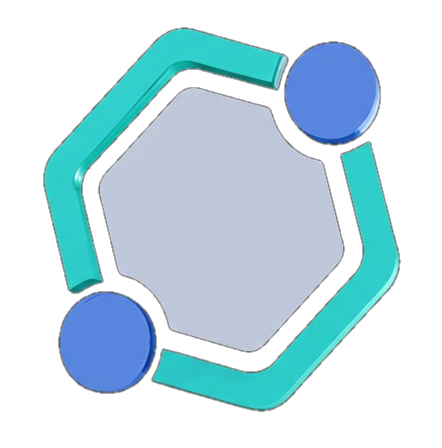How to Implement RAG Best Practices for an Effective WhatsApp AI System in 2025
- teevo company
- Jul 28
- 4 min read
Updated: Oct 13

Understanding RAG in the Context of WhatsApp AI
Before we get into the specifics, let's clarify what RAG means. Retrieval-Augmented Generation is an innovative method where AI systems use external databases to acquire relevant information while generating responses. This approach increases the accuracy and context of the information delivered to users. For example, a well-implemented system can provide instant answers about a product's specifications or troubleshoot customer issues effectively.
Now, let’s explore how to embed RAG practices into your WhatsApp AI system for optimal performance.
Step 1: Define Clear Objectives
Establishing clear objectives is fundamental to deploying a successful AI system.
Ask yourself: What specific outcomes do you want from your WhatsApp AI? For instance, if your goal is to enhance customer service, your AI can be programmed to answer frequently asked questions or navigate users through complex queries. Setting explicit goals will guide the development process and ensure that your AI accurately meets user needs.
Step 2: Build a Comprehensive Knowledge Base
A strong knowledge base is critical for any AI system.
Make sure it includes diverse information such as FAQs, product details, troubleshooting advice, and more. For example, if your company sells electronics, your knowledge base should cover the details of each product, including warranty information and common troubleshooting steps. Organizing this information in an easily accessible format enables the RAG model to efficiently retrieve relevant details and provide accurate responses to user inquiries.
Step 3: Optimize Information Retrieval Processes
Information retrieval is central to the RAG approach.
Incorporate advanced search algorithms that use relevance ranking to pull information from your knowledge base. For example, if a user asks about a product's compatibility with other devices, the AI should prioritize the most relevant information first, significantly enhancing the user's experience by delivering timely and accurate answers.
Step 4: Invest in AI Training
Proper training for your AI system is essential for achieving top performance.
Utilize machine learning techniques to help your AI learn from its past interactions. For instance, consider using feedback from customer interactions to improve response accuracy by at least 20%. Establish a feedback loop where the AI analyzes its performance to enhance its response generation continuously. This improvement will ultimately boost user satisfaction rates.
Step 5: Implement Conversational Context Awareness
For a more engaging user experience, AI systems should not only understand individual queries but also retain conversational context.
Integrating mechanisms that enable the AI to remember past interactions can significantly improve the overall communication flow. For example, if a user previously inquired about a product’s shipping details, the AI can reference this in future conversations, making interactions feel more personalized and less robotic.
Step 6: Focus on Natural Language Processing (NLP)
Natural Language Processing is crucial for chat-based AI systems.
Enhance your WhatsApp AI with advanced NLP models to ensure accurate understanding and generation of text. By using sophisticated NLP tools, your AI will be better equipped to interpret user queries and respond in a way that feels natural and relatable, improving the overall engagement rate by up to 30%.
Step 7: Maintain User Privacy and Security
User privacy must be a top priority, especially when handling personal information.
Implement stringent security measures to protect user data and ensure compliance with regulations such as GDPR or CCPA. For instance, clearly communicate to users how their data is used and stored. Doing so will help build trust and strengthen customer relationships.
Step 8: Conduct User Testing and Feedback Analysis
Integrating user testing into your development cycle is vital for ongoing improvement.
Involve actual users in testing sessions and collect feedback regularly. For example, conducting surveys after interactions can help assess user satisfaction and pinpoint areas for enhancement. Adjustments made based on real user experiences can elevate your system’s effectiveness.
Step 9: Update and Iterate Your AI System
The digital landscape changes quickly, and your AI system should adapt accordingly.
Regularly refresh your knowledge base and training data to include the latest information and improve response accuracy. An iterative approach ensures that your AI system remains relevant and responsive to new challenges, like evolving consumer trends or emerging technologies.
Step 10: Measure Performance Metrics
Establish key performance indicators (KPIs) to evaluate the effectiveness of your WhatsApp AI system.
Metrics such as average response time, user satisfaction ratings, and resolution rates provide insights into its performance. For instance, aim for a response time of under five seconds for immediate user satisfaction. Regularly reviewing these metrics helps identify areas for improvement and aligns your AI with users' evolving needs.
Moving Forward
As we transition into 2025, integrating RAG best practices into your WhatsApp AI system can significantly enhance user experience and satisfaction. By establishing clear objectives, building a robust knowledge base, and focusing on continual improvement through training and user feedback, businesses can effectively leverage AI to provide more engaging, efficient, and accurate services.
Adopting these RAG best practices not only boosts operational efficiency but also positions companies to meet customer expectations in a fast-changing digital world. The future of communication is here—embrace these strategies to create an extraordinary WhatsApp AI system that stands the test of time.



Comments